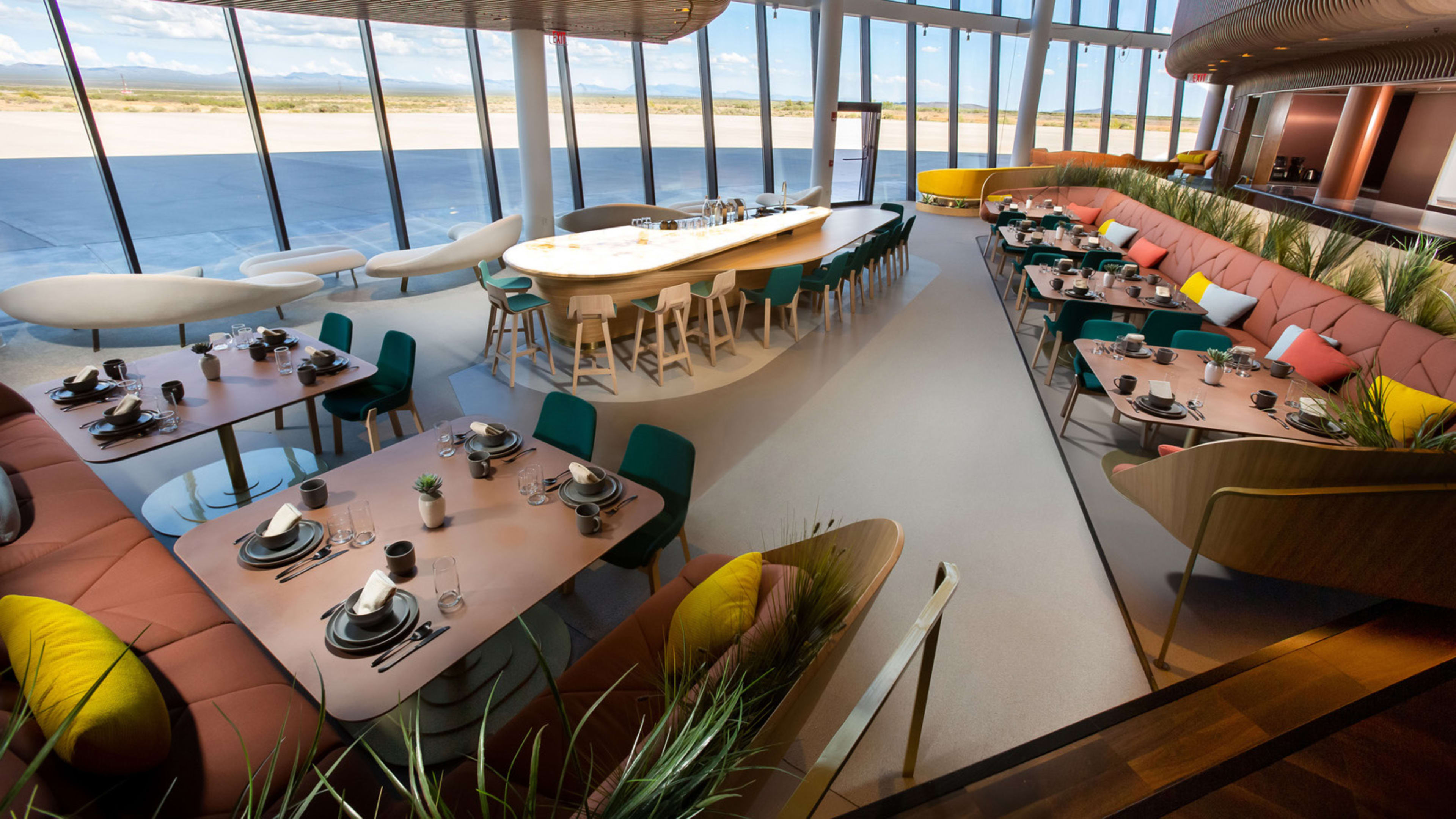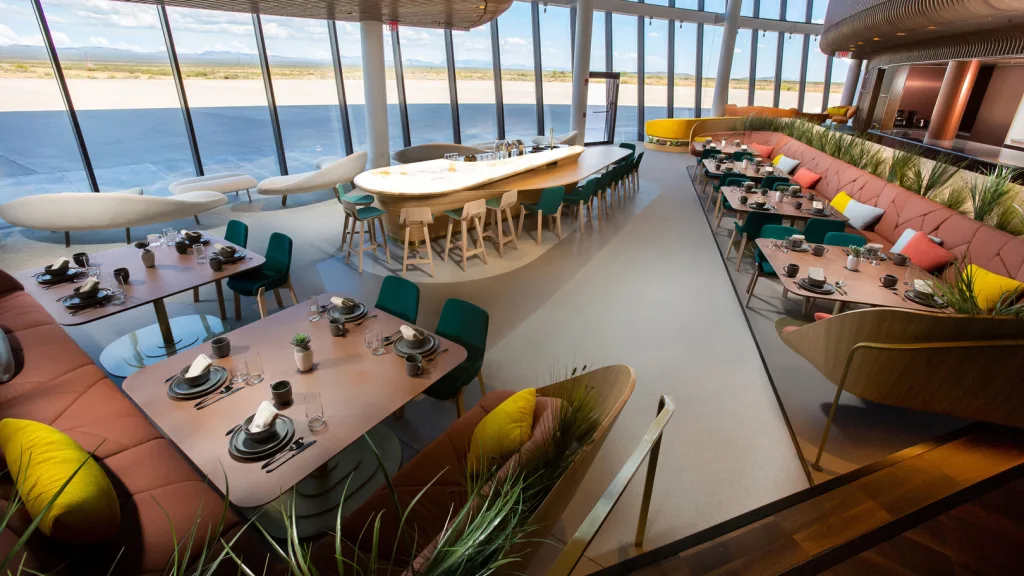If space-obsessed billionaires get their way, people who can pay a whopping amount of money—about $250,000—will be hopping on a commercial rocket for a space flight in the next few years. At Richard Branson’s Virgin Galactic, astronauts are scheduled to fly as soon as 2020, and the company is now readying its spaceport for its first customers. Where will these wealthy space tourists hang out before they get on their spaceship? Inside a gorgeous lounge full of natural materials, featuring a view of the New Mexico desert and not a piece of technology in sight.
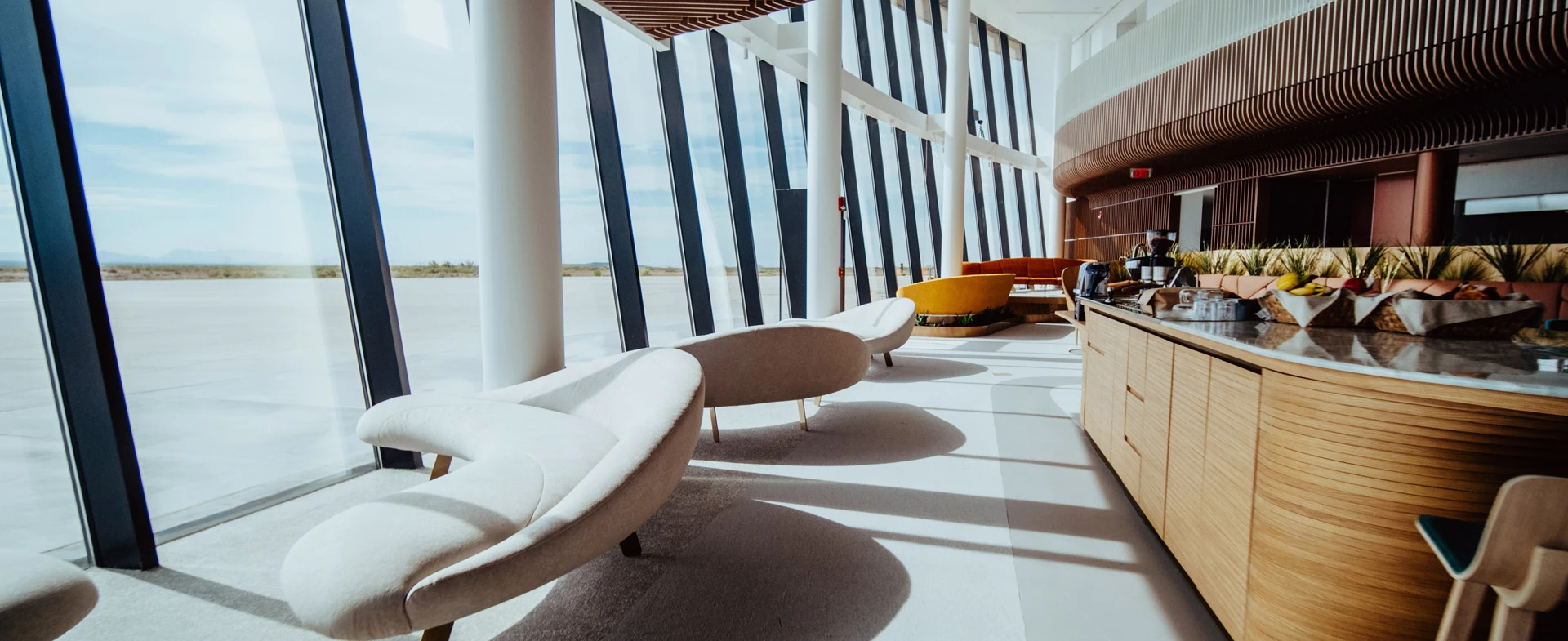
Last week, Virgin Galactic unveiled the interior spaces of Spaceport America headquarters in New Mexico. The spaceport was originally built by Foster + Partners in 2011, but has mainly served as a place to build and store aircraft since then as the company has experienced numerous delays in sending rockets to space. By finally building out the first two floors of the building, which Virgin Galactic refers to as the “Gateway to Space,” the company has turned it from a hangar to a fully operational spaceport, where Virgin Galactic plans to start running commercial flights next year.
The newly installed interiors aren’t just for the mission control experts, pilots, and mechanics who have recently started working out of the spaceport full-time. The design team at Virgin Galactic also unveiled a lounge where what it calls “future astronauts” and their families can hang out preflight. It’s the ultra-exclusive equivalent of an airport’s first-class lounge, only for people (and their entourages) who can afford the $250,000 roundtrip ticket.
“The ultimate goal is just to celebrate becoming an astronaut with friends and family in that location,” says Jeremy Brown, design director at Virgin Galactic who formerly worked in design at Virgin Atlantic. “It’s using the Gateway to Space for that metaphorical and physical vehicle to becoming an astronaut.”

The lounge, which occupies the first floor of the spaceport, pays homage to the Earth, not the galaxy. Called Gaia, it looks just like a swanky restaurant, with a bar in the middle of the space. Virgin Galactic worked with the London-based design studio Viewport, which chose natural materials like wood and stone, as well as colors that would complement the sweeping views of the New Mexico desert outside. All the chairs in the space are oriented toward the windows.
“We were very much trying to make sure there was an area within [the] spaceport that didn’t have lots and lots of tech and future feel,” says Gareth Southall, cofounder and director at Viewport who also previously worked in design at Virgin Atlantic.
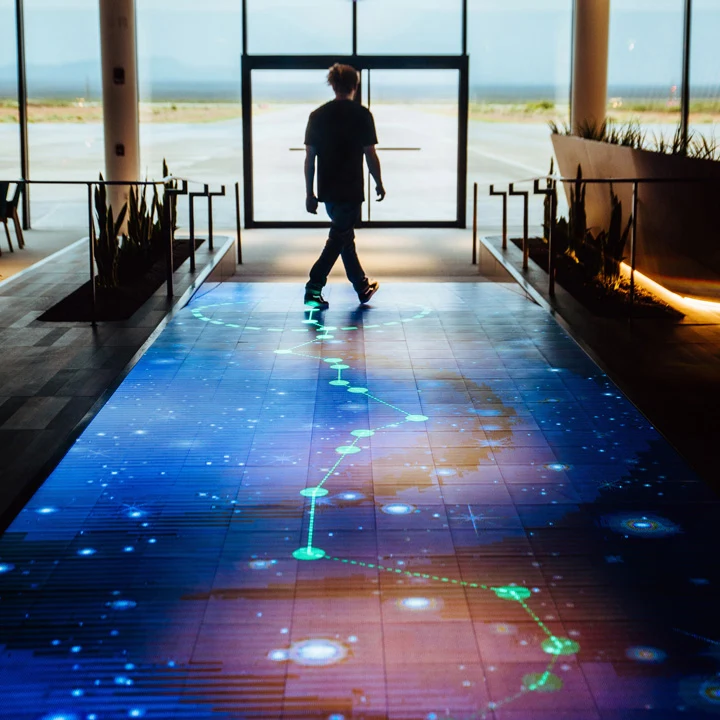
The only technology that is incorporated into the space is called the “astronaut walkway,” which features an interactive floor with graphics of constellations that shift when you step on it (it can also be programmed to show graphics such as the status of flights). The elevated walkway runs right through the center of the space out to the runway, acting almost like a high-tech red carpet for the space tourists. Just in case all of the attention in the room isn’t on them as they walk out, there’s a mirror-clad inverted pyramid suspended over the walkway to give spectators a better view.
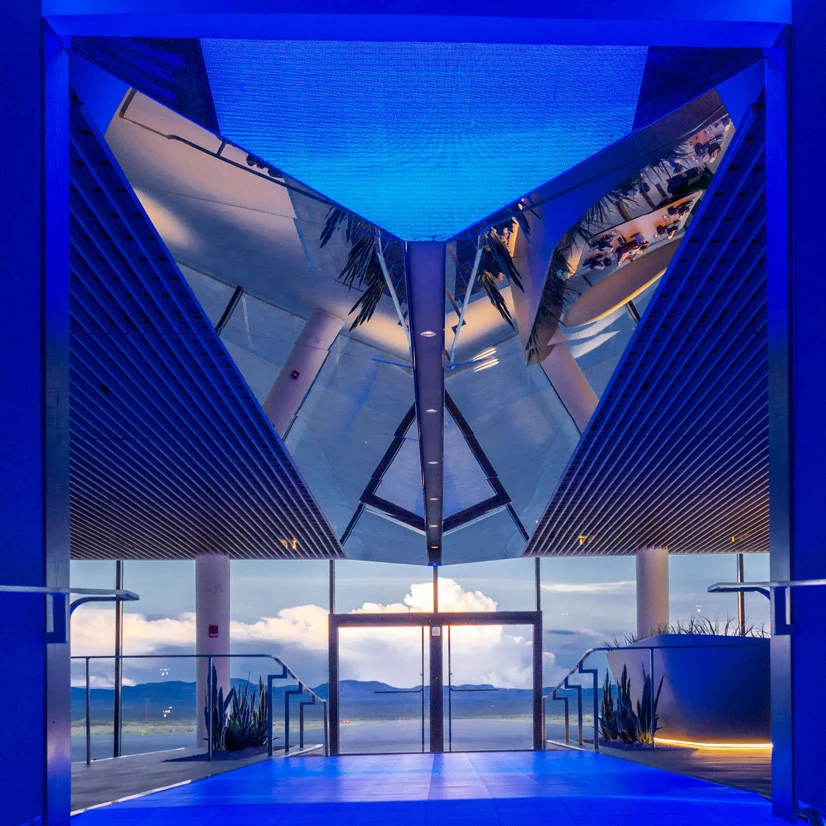
The Gaia lounge also doubles as an office lounge for Virgin Galactic employees. Couches near the large windows are meant for paying customers to hang out in, but when they’re not around, employees can sit in them for presentations, and the windows can be used like dry-erase boards. Beyond these functional elements, the lounge works just like the cafe in any office. “It’s very much the social hub of the building,” Brown says. “It gives us a space for people to relax in, have informal meetings, and obviously have breaks, lunch, and refreshments with colleagues.”
That will help the company get use out of the space before the future astronauts show up (the second floor is more of a devoted workspace for mission control). But when they are, Brown views interactions between the company’s customers and its employees as a huge positive; in fact, the space was designed as a series of clustered areas with the goal of facilitating conversations. “Future astronauts can have breakfast with astronaut pilots, and with rocket engineers,” Brown says, with the idea that they feel included in the process of building the technology and operating the missions.
The lounge is also a place for customers’ families and friends to hang out before, during, and after their short space flight, which the company describes as lasting long enough to allow astronauts to experience a few minutes of weightlessness before descent. Brown thinks making the flight experience “inclusive,” as he put it, helps Virgin Galactic stand out from its competition (though of course, no members of the public are allowed into the building). That’s reflected in the design as well: Gaia has one elevated area where Southall imagines a large family camping out to watch their family member take flight. Paying customers will also spend time on the building’s third floor in a dedicated facility for astronauts (which is still under construction). There, they’ll go through a three-day training session to cover all the ground rules and safety procedures.
It’s all very extravagant, but that’s the point. If someone is going to pay you $250,000 to take them to space, you’d better have an ultra-premium experience for them waiting down on Earth, too.
Recognize your brand’s excellence by applying to this year’s Brands That Matter Awards before the early-rate deadline, May 3.
